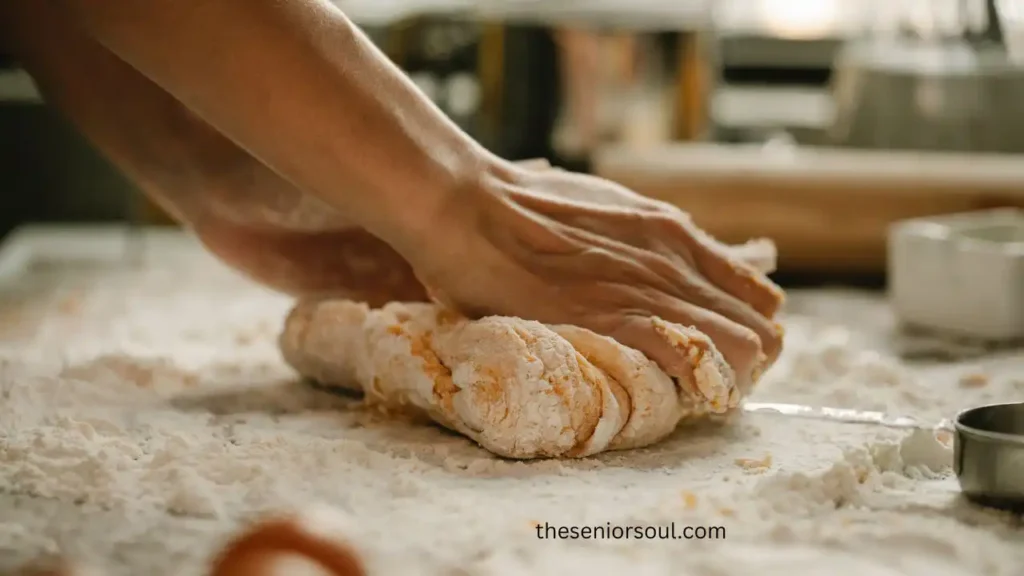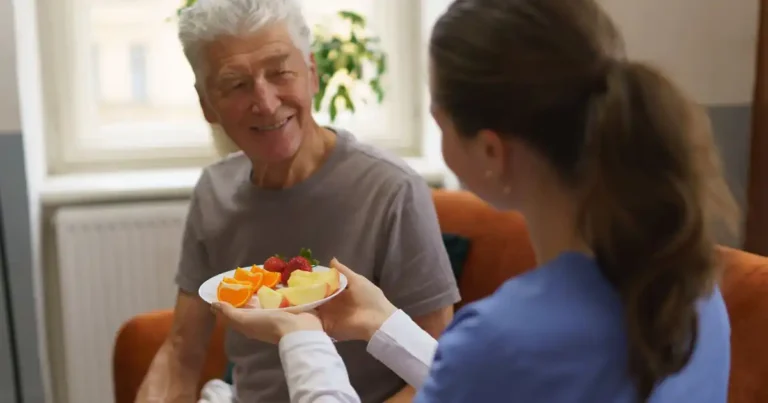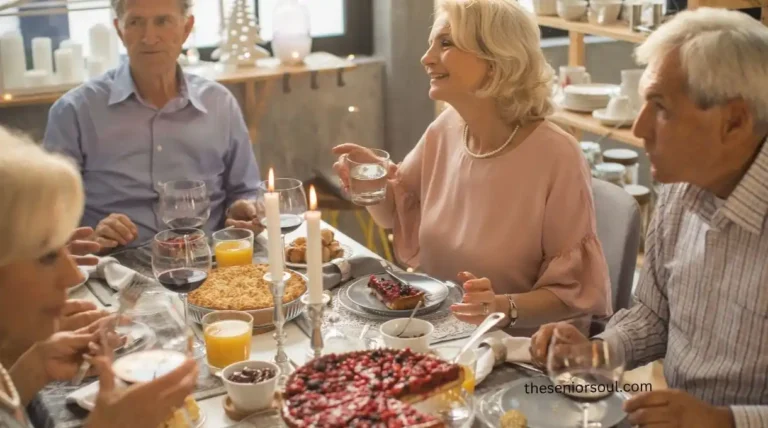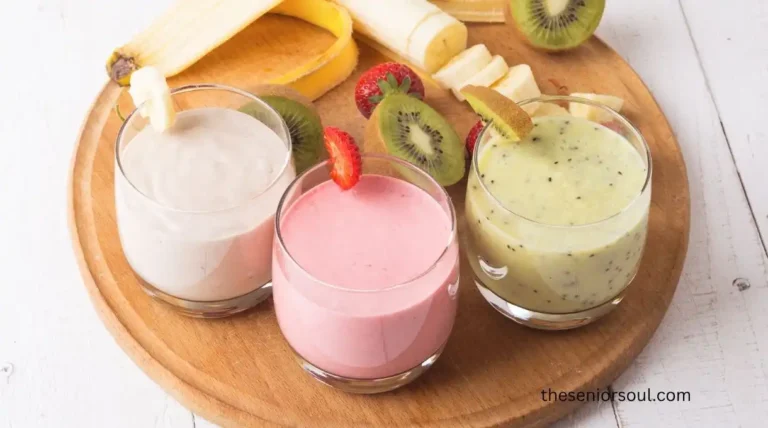Which Must-Try cooking activities for seniors Improve Brain Health?

The core of my daily work with you continues to be cooking activities for seniors. A shared dinner, a soup pot, and a cutting board can transform your social life, your mood, and your nutrition. Additionally, I may directly prevent loneliness, muscle loss, and malnutrition by cooking for seniors.
Throughout the following five minutes, I walk you through the issue, give you a little context so you understand why it matters, and then give you specific, doable solutions you can try before your next grocery shop.
Table of Contents
Cooking Activities for Seniors and the Hidden Risks We Face
In the kitchen, older individuals like you face a number of obstacles. Knives act more slowly on arthritic fingertips. Labels on packages are blurred by changes in vision. Food choices are limited by tight costs. From my vantage point, I see these obstacles contribute to a greater threat: food insecurity. In 2022, about seven million Americans over 60 did not have consistent access to wholesome food, according to feedingamerica.org.
The same obstacles frequently degrade the quality of diets in households; in a Finnish study, 7% of healthy participants were at danger of malnutrition, and 28% of healthy participants had low nutrition ratings when they started a cooking class.
The next layer of health data is painted. Researchers link sarcopenia, the age-related loss of muscle that currently affects over 15% of seniors in the United States, to a low protein diet (PubMed). As in the gym, poor grip strength predicts falls in the living room, and bones deteriorate more quickly than they can be repaired. As a result, cooking activities for seniors go well beyond simple recipe enjoyment; they are at the forefront of preventing frailty.
The Repercussions of Difficult Cooking Go Beyond the Kitchen
The thought of what might occur if we do nothing makes me more anxious. Chronic illness is encouraged by poor eating, but the first signs of the cost are minor ones you can ignore, including the pain of loneliness, diminished wound healing after a minor cut, or lightheadedness upon standing. Seniors with food insecurity had twice the risk of developing depression.
Social repercussions occur concurrently. Food-based group sessions improved older persons’ sense of belonging and reduced loneliness, according to community researchers at Bournemouth University in the United Kingdom. Advocates for aging in the United States confirm that older persons who have meals together report improved mental health and try a greater range of nutrient-dense foods.
When cooking activities for seniors are absent, these inexpensive connections are lost.
Additionally, cognitive health is at risk. Group cooking activities for seniors facilities have been shown in small trials to improve conversation flow, memory recall, and attention. Several parts of the brain fire simultaneously whenever knife, smell, and conversation come together. The stimulation wanes if the task is skipped.
Step-by-Step Cooking Activities for Seniors That I Walk You Through
Below you find a toolbox of ten activities I have tested with clients. Each one starts with an everyday task and ends with a measurable benefit. Try them singly or weave them into a weekly rhythm.
Audit of the Pantry with a Goal
Red stickers are applied to high-salt extras, blue stickers to whole-grain boxes, and green stickers to cans high in protein. I stand with you at the shelf. Then, you initially aim for blue and green. A messy shelf is transformed into instant dinner prompts by the color coding.
Put everything with a red tag behind the green ones every Sunday. Reducing salt doesn’t make you feel deprived.
Safe Prep with Color-Coded Cutting Boards
The risk of cross-contamination is reduced by half and recall is made easier with distinct boards—white for dairy, yellow for poultry, and brown for bread. If cataracts cause vision loss, bright contrast also helps. Boards should be kept upright in a file-folder rack next to the sink so that you can choose the correct one without bending.

Batch-Prep Using Flexible Instruments
Rocker knives, spring-loaded scissors, and jar openers reduce joint strain. On Mondays, we prepare twice as much lentil stew, freeze flat portions, and relieve you of the burden of cooking on hectic days.
Seniors in Finland who took cooking classes that included tool demonstrations had better food quality and vitamin C consumption.
Video Sessions for Cooking activities for seniors Along
Adults 65 and older increased their lean-protein consumption and muscle strength through a Texas Tech online culinary medicine course. Record a 20-minute cook-along in which we all make the same protein-rich breakfast bowl, I am able to reproduce the model. You substitute active skill time for passive screen time. Application each day: Hold a tablet at eye level on a sturdy bookstand, pause when necessary, and rewind for clarity.
A Four-person Themed Potluck
Small numbers reduce dishload and noise stress. Conversation is sparked by themes like “Family rice stories” or “two-ingredient soups.” Eating with others reduces the chance of isolation and encourages variety.
Council on National Aging.
To balance effort, rotate host duties every day. The host serves the entrée, and guests bring sides that go well with it.
Grain Bowls to Help Your Brain
According to research, older generations who follow whole-diet patterns like DASH and Mediterranean experience shorter cognitive decline. I show you how to construct bowls that contain 50% veggies, 25% protein (such as fish, eggs, and legumes), and 25% whole carbohydrates. Use herbs in place of excess salt. Layer fresh protein and vegetables with cooked quinoa or brown rice at each meal.
Protein-Driven Smoothie Bar
I arranged frozen berries, chia packets, single-serve Greek yogurt, and measured whey powder on a counter dish. Aim for 1–1.2 grams of protein per kilogram of body weight, which is the amount recommended by the National Council on Aging and geriatric nutritionists. On mornings with little energy, the system eliminates the chore of chopping.
To avoid guesswork, pre-label bags with scoop counts for daily use.
Memory-Game: Ingredient Search
I conceal six recipe components throughout the kitchen. After reading the list once, you retrieve it note-free. We enhance working memory when you move joints in a safe manner. Application every day: Have a friend switch positions with you; friendly rivalry increases participation.
Greenhouse-to-Pot Herb Practice
Plant parsley, mint, or basil in little countertop pots. You add phytonutrients without sodium by picking herbs during mealtime. Cutting on a daily basis maintains fine motor skills.
Gardening as part of community food activities is associated with better wellbeing and social networks (Bournemouth University).
The Recipe Project for Stories
As we prepare a family meal together, you dictate the recipe. Your memory prompts and the steps are typed by me. One month later, you have a pamphlet prepared for your grandson. Legacy and purpose meet cognitive recollection. Use one picture per recipe each day to help strengthen visual memory.
Verifiable Evidence Checkpoints
Three cooking sessions combined with nutrition instruction improved the psychological well-being and diet-quality scores of older Finnish citizens.
A 2024 randomized study revealed that web-based protein-focused cooking classes increased older people’ lean mass.
After six weeks, community feeding initiatives in England raised social connection scores (Bournemouth University).
Cooking together improves interaction and cognitive function in senior living environments (MDPI).
I base every activity I recommend on these facts. Simply repeatable acts linked to peer-reviewed findings, no frills.
Connecting Everything
I see energy come back when you use the brain-boost bowl instead of canned soup or when there is laughter at the themed potluck. Cooking activities for seniors who cook do more than just satisfy their hunger. They strengthen memory, protect muscle, and strengthen bonds with others.
Plan the first video cook-along on next Tuesday, put a potluck on your calendar, and begin the pantry audit immediately. Little actions build up. Diet, cognitive, and community study discoveries will soon appear in your own laboratory—the kitchen table.
RELATED POSTS
When Smart Dementia Friendly Board Games Prevent Restlessness
What Unusual Hobbies for Seniors Offer Incredible Social Perks?
What Are the Hidden Benefits of Low Impact Exercises for Seniors?
Frequently Asked Questions about cooking activities for seniors
Why are cooking activities for seniors beneficial ?
Cooking activities for seniors to improve nutrition, increased social interaction, and help seniors maintain their motor skills—all of which have been linked in studies to a lower risk of depression and frailty. Simple activities that engage the hands, eyes, and mind include measuring spices or chopping soft vegetables. Frequent practice maintains self-assurance in the kitchen and promotes independent, healthy living on a daily basis.
How can seniors with arthritis prepare meals safely?
Adaptive equipment such as electric can cutters, jar openers, non-slip mats, and ergonomic knives can be used by elderly people with arthritis. Lightweight cookware, slow cookers, and pre-cut produce all lessen hand strain. Bending can be avoided by placing ingredients at counter height. Menus centered around comforting dishes like stews guarantee hydration without causing discomfort by interfering with everyday chores.
What cooking classes suit beginners over 70?
Beginners over 70 benefit greatly from short, practical sessions that focus on fundamental nutrition, one-pot meals, and basic knife skills. Look for classes at community colleges or senior centers that offer appropriate utensils, limit registration, and incorporate tasting sessions. Classes that combine diet education with cooking greatly increase social interaction, protein intake, and self-esteem.
Which nutrients should seniors prioritize when cooking?
Seniors should prioritize fiber for digestion, omega-3 fats for heart and brain health, antioxidant-rich vitamins C and E, high-quality protein for muscle preservation, and calcium and vitamin D for strong bones. Lean meats, legumes, leafy greens, fortified dairy, and vibrant produce can all be cooked to provide these nutrients without adding too many calories or sodium.
How often should seniors cook to maintain skills?
Cooking three times a week preserves manual dexterity, cognitive sequencing, and taste variety, while daily practice is best. Seniors can switch up the major cooking days by assembling or reheating meals more easily. Regular practice of fundamental skills, such as chopping and sautéing, maintains proficiency and strengthens dietary practices that promote self-sufficiency and security.
What safety tips should caregivers know during senior cooking sessions?
Clear, well-lit work areas, sturdy cutting boards, and quick availability to oven mitts are all things that caregivers should make sure of. Induction cooktops reduce the danger of burns. To avoid stretching, keep knives close at hand. Use large fonts for labeling spices. To maintain dignity and confidence, supervise cooktop duties but promote freedom in measuring ingredients and washing produce.
Can cooking lower loneliness among seniors living alone?
Yes. Organizing potlucks, taking cooking classes together, or sharing recipes online all provide structured social engagement. Research shows that when older persons eat with others at least twice a week, their loneliness scores decrease considerably. The kitchen fosters memories, shared objectives, conversation starters, and sensory engagement—all of which improve wellbeing and interpersonal relationships.
How do I adapt recipes for reduced sodium without losing flavor?
Use salt-free spice mixes, fresh herbs, garlic, onion powder, and citrus juice as layered flavor substitutes. Toasting spices releases their scents. For depth, use mushrooms high in umami and low-sodium broth. Retrain your taste buds by gradually lowering the salt. Adjust the acidity and herbs by tasting again until the flavor is balanced for a good blood pressure level.
What technology helps seniors cook independently?
While hands-free instructions are provided by recipe assistants and voice-activated timers, smart induction burners turn off on their own. Announcing volumes are talking measuring cups. Remotely, refrigerator cameras display the contents. Adapted recipes are shown on large-print tablets. When used in tandem, these tools facilitate precise measures, safe heat management, and memory cues, allowing senior citizens to prepare meals independently and with confidence.
How can seniors on tight budgets access fresh ingredients?
Costs can be reduced by accessing SNAP double-dollar markets, purchasing seasonal vegetables, and participating in local senior farm-share programs. Purchasing beans, grains, and frozen veggies in bulk allows you to receive nutrients at a reasonable price. Community gardeners frequently share their excess produce. Meal planning around weekly store flyers is advised by dietitians in order to optimize savings and preserve variety, well-balanced meals through astute pantry management.




